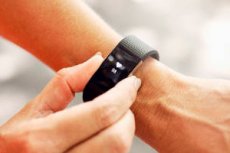New publications
Goals for number of steps and exercise time are equally useful
Last reviewed: 02.07.2025

All iLive content is medically reviewed or fact checked to ensure as much factual accuracy as possible.
We have strict sourcing guidelines and only link to reputable media sites, academic research institutions and, whenever possible, medically peer reviewed studies. Note that the numbers in parentheses ([1], [2], etc.) are clickable links to these studies.
If you feel that any of our content is inaccurate, out-of-date, or otherwise questionable, please select it and press Ctrl + Enter.

In the age of smartwatches, tracking your steps has never been easier, but current physical activity guidelines don’t provide specific guidelines for how many steps to take to stay healthy. A new study by researchers at Brigham and Women’s Hospital, a founding member of Mass General Brigham, suggests that both step and time goals for exercise are equally associated with a reduced risk of premature death and cardiovascular disease. So choosing a goal — steps or time — may be less important than choosing a goal that fits your personal preferences.
The results are published in a paper titled “Time- and step-based physical activity metrics for health” in JAMA Internal Medicine.
Physical activity reduces the risk of chronic diseases and infections and promotes longevity. Current U.S. guidelines, last updated in 2018, recommend that adults get at least 150 minutes of moderate or vigorous physical activity (such as brisk walking) or 75 minutes of vigorous activity (such as jogging) per week.
At that time, most of the available evidence on health benefits was based on studies in which participants self-reported their physical activity. There was little evidence on the link between step count and health.
Fast forward to today, when wearables have become ubiquitous and step count is now a popular metric among many fitness tracking platforms. How do time-based goals compare to step-based goals? The researchers aimed to answer that question.
“We recognized that existing physical activity guidelines primarily focus on duration and intensity of activity but do not include recommendations for steps,” said lead author Rikuta Hamaya, MD, PhD, MS, a researcher in the Division of Preventive Medicine at BWH.
“With more people using smartwatches to measure their steps and overall health, we saw the importance of determining how step measurements compare to time goals as they relate to health outcomes – which is better?”
In this study, researchers collected data from 14,399 women participating in the Women's Health Study who were healthy (free of heart disease and cancer).
Between 2011 and 2015, participants aged 62 years and older were required to wear research wearable devices for seven consecutive days to record their physical activity levels, removing the devices only for sleep or bathing.
During the study period, surveys were conducted annually to determine health outcomes of interest, including all-cause death and cardiovascular disease. The researchers followed the participants until the end of 2022.
While wearing the devices, the researchers found that the participants engaged in an average of 62 minutes of moderate to vigorous physical activity per week and accumulated an average of 5,183 steps per day. Over an average follow-up period of nine years, about 9% of the participants died and about 4% developed cardiovascular disease.
Higher levels of physical activity (assessed by both steps and time spent in moderate or vigorous activity) were associated with a significant reduction in the risk of death or cardiovascular disease – the most active quartile of women had a 30–40% lower risk compared with the least active quartile. And, based on time and step measurements, people in the top three quartiles of physical activity lived an average of 2.22 and 2.36 months longer, respectively, compared with the bottom quartile, over nine years of follow-up. This survival advantage persisted regardless of differences in body mass index (BMI).
While both metrics are useful for assessing health, Hamaya explained that each has its own advantages and disadvantages. For example, step count may not account for differences in fitness levels. For example, if a 20-year-old and an 80-year-old walk for 30 minutes at a moderate intensity, their step counts may differ significantly.
On the other hand, steps are easy to measure and less subject to interpretation than exercise intensity. In addition, steps capture even the sporadic movements of daily life, not just exercise, and these types of activities are likely to be performed by older people.
“For some, especially young people, physical activity may include activities like tennis, soccer, walking or jogging, which are easy to track in steps. However, for others, it may be cycling or swimming, where the duration of exercise is easier to control. So it’s important that physical activity guidelines offer multiple ways to achieve goals. Movement looks different for everyone, and almost all forms of movement are good for our health,” Hamaya said.
The authors note that this study only included a single assessment of time- and step-based physical activity metrics. Additionally, most of the women in the study were white and of high socioeconomic status.
Finally, this study was observational, so causal relationships cannot be proven. In the future, Hamaya plans to collect more data through a randomized controlled trial to better understand the relationship between time- and step-based exercise metrics and health.
Senior author I-Min Lee, MBBS, ScD, an epidemiologist in the Division of Preventive Medicine at BWH, concluded, “The next federal physical activity guidelines are planned for 2028. Our findings further highlight the importance of adding step-based goals to allow for the flexibility of goals that suit people with different preferences, abilities, and lifestyles.”
